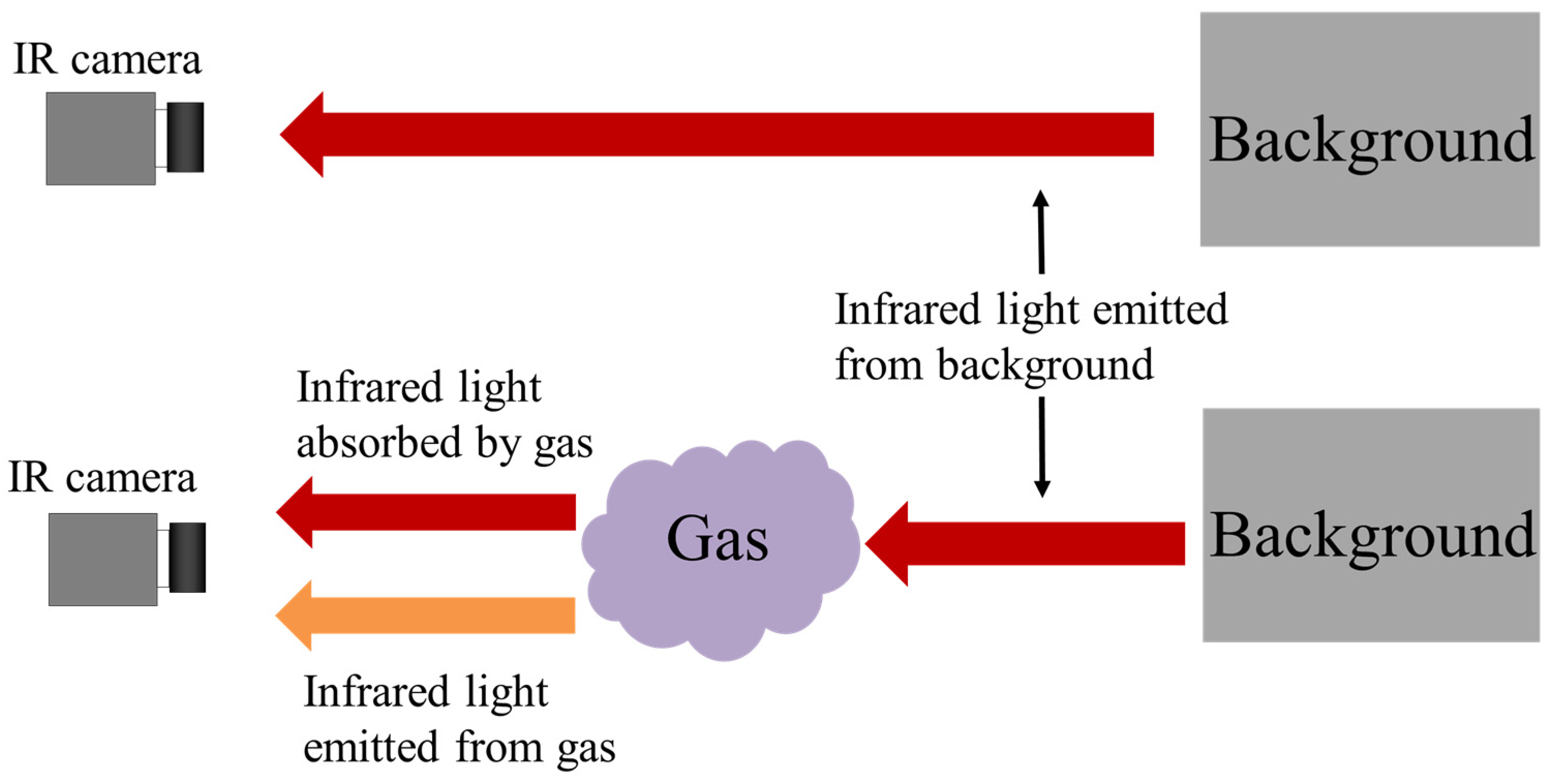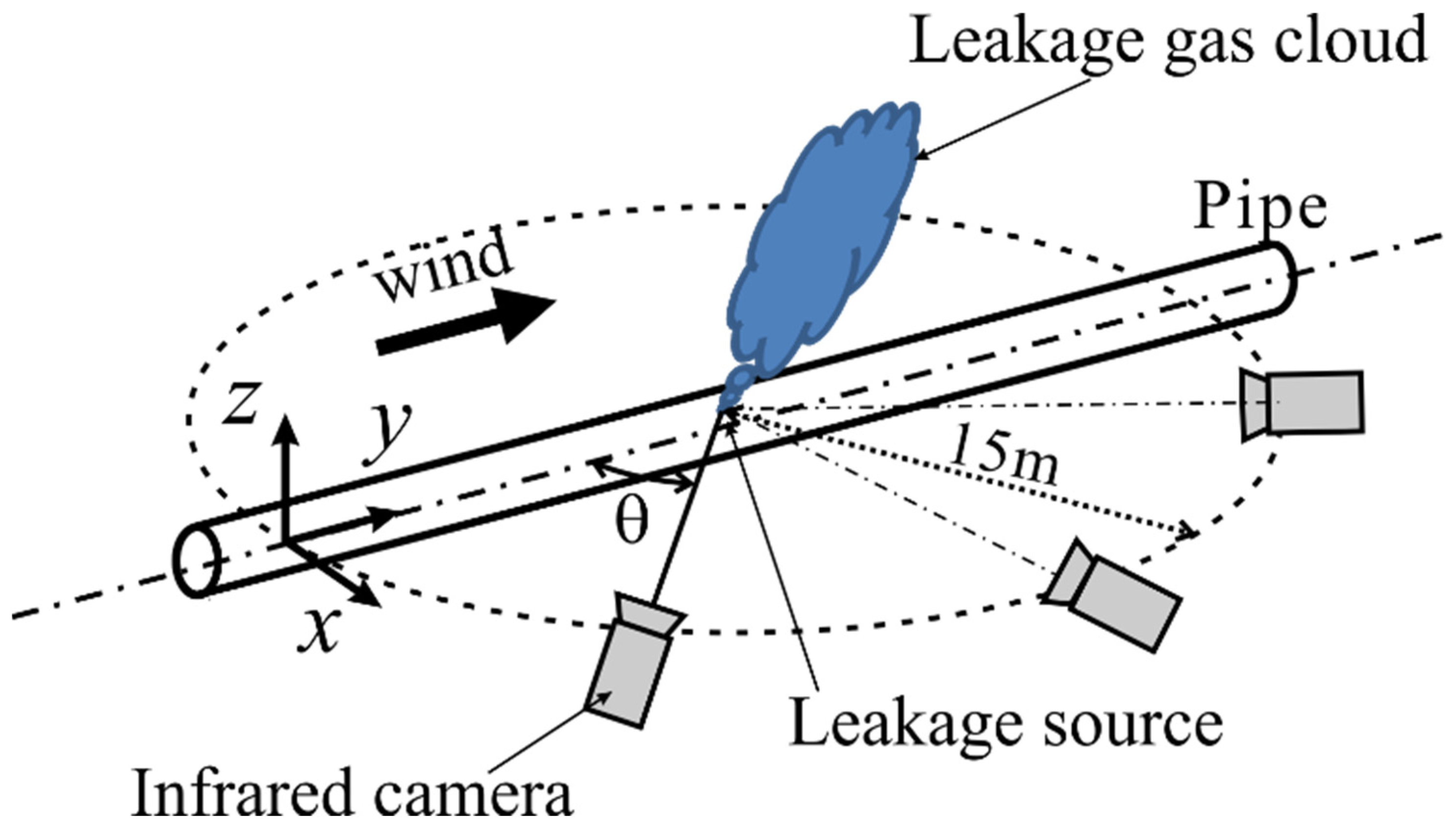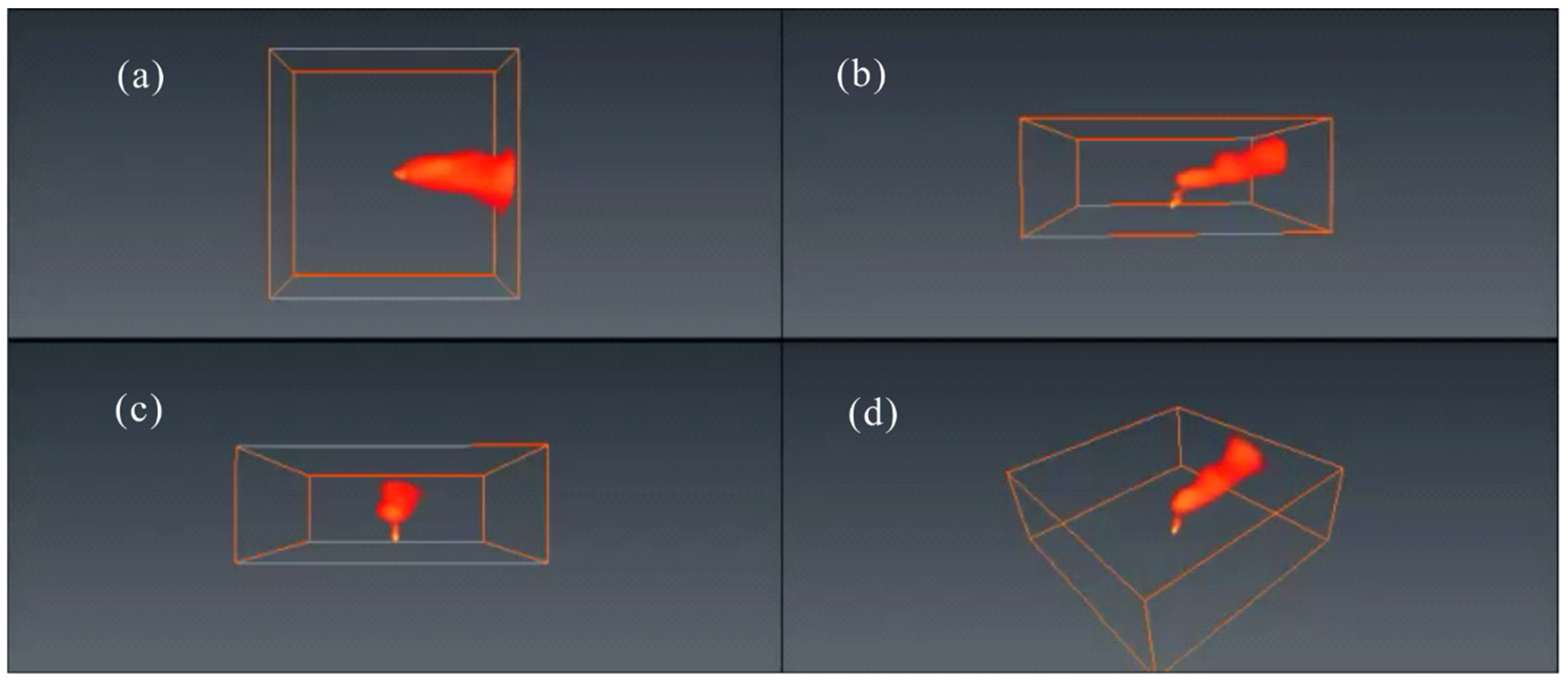Four-Dimensional Reconstruction of Leaked Gas Cloud Based on Computed Tomography Processing of Multiple Optical Paths Infrared Measurement †
Abstract
:1. Introduction
2. Measurement Principle
2.1. Gas Visualization Principle
2.2. ART Reconstructed Method
3. Reconstruction Simulation
3.1. Numerical Simulation of Leakage Gas Flow
3.2. 4D Reconstruction
4. Conclusions
Supplementary Materials
Acknowledgments
References
- Kudo, H. Iterative Methods for Tomographic Image Reconstruction: Foundations and Surprising Examples. Med. Imaging Technol. 2005, 23, 23–29. [Google Scholar]
- Uchida, M.; Shiozawa, D.; Sakagami, T.; Kubo, S. Three-Dimensional Reconstruction of Leaked Gas Cloud Image Based on Computed Tomography Processing of Multiple Optical Paths Infrared Measurement Data, Advances in Condition Monitoring and Structural Health Monitoring; Springer Nature: Singapore, 2021; pp. 751–756. [Google Scholar]




Publisher’s Note: MDPI stays neutral with regard to jurisdictional claims in published maps and institutional affiliations. |
© 2021 by the authors. Licensee MDPI, Basel, Switzerland. This article is an open access article distributed under the terms and conditions of the Creative Commons Attribution (CC BY) license (https://creativecommons.org/licenses/by/4.0/).
Share and Cite
Shiozawa, D.; Uchida, M.; Ogawa, Y.; Sakagami, T.; Kubo, S. Four-Dimensional Reconstruction of Leaked Gas Cloud Based on Computed Tomography Processing of Multiple Optical Paths Infrared Measurement. Eng. Proc. 2021, 8, 33. https://doi.org/10.3390/engproc2021008033
Shiozawa D, Uchida M, Ogawa Y, Sakagami T, Kubo S. Four-Dimensional Reconstruction of Leaked Gas Cloud Based on Computed Tomography Processing of Multiple Optical Paths Infrared Measurement. Engineering Proceedings. 2021; 8(1):33. https://doi.org/10.3390/engproc2021008033
Chicago/Turabian StyleShiozawa, Daiki, Masaki Uchida, Yuki Ogawa, Takahide Sakagami, and Shiro Kubo. 2021. "Four-Dimensional Reconstruction of Leaked Gas Cloud Based on Computed Tomography Processing of Multiple Optical Paths Infrared Measurement" Engineering Proceedings 8, no. 1: 33. https://doi.org/10.3390/engproc2021008033
APA StyleShiozawa, D., Uchida, M., Ogawa, Y., Sakagami, T., & Kubo, S. (2021). Four-Dimensional Reconstruction of Leaked Gas Cloud Based on Computed Tomography Processing of Multiple Optical Paths Infrared Measurement. Engineering Proceedings, 8(1), 33. https://doi.org/10.3390/engproc2021008033





